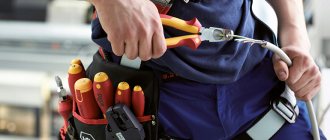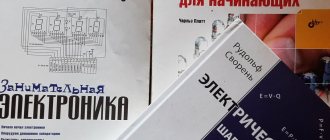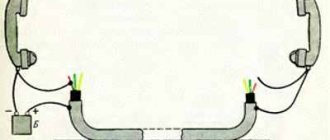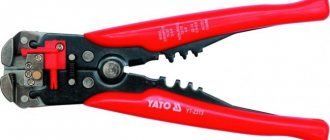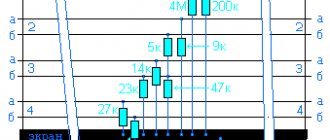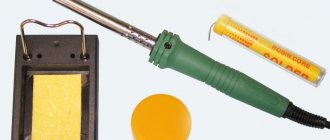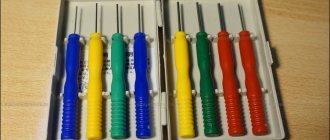Not a single competent master can do without special equipment. An electrician is a professional who troubleshoots electrical networks, appliances, and also carries out installation work. To do the job efficiently, you need the necessary tools for an electrician.
This article will review various electrical installation tools aimed at professionals and beginners. Recommendations for its use by novice electricians will also be given. Now let's study the list of tools that an electrician may have for repairing and servicing electrical equipment.
Dielectric gloves
For any work on live circuits, it is necessary to use rubber dielectric gloves. Before use, they must be inspected for punctures, cuts and cracks.
You can purchase it in stores specializing in electrical goods and electrical equipment. It is necessary to check the quality of the material for thickness and strength. The easiest way to check is to fill the glove with air and press it with your hands. Air leakage from a filled glove is unacceptable.
A good example of the minimum required tool, insulated to 1000V:
Jonard TK-110INS - insulated tool set up to 1000 V (11 pieces in a case)
Jonard TK-110INS set
Consists of pliers and screwdrivers made of good chrome vanadium steel 60 CRV, it is reliable and durable. The cutting edges are high frequency induction hardened for superior toughness. The handles are made of two-color thermoplastic elastomer (TEP). The tools are tested to 10,000 VAC and can be used on lines up to 1000 VAC. Complies with international standards IEC 60900. The tool is housed in a convenient book case made of very durable nylon.
To fully work with live parts, you will additionally need: an electrician's knife, a tester screwdriver, a multimeter for measuring voltage, a signal generator and a probe antenna for selecting the desired cable from a bundle and tracing it in the wall, adjustable pliers, a rubber mat, dielectric gloves and safety glasses . This list can be continued for a long time. In the process of work, everyone will understand what else may be needed. There are never too many tools, just not enough space ☺.
Screwdrivers of different types and sizes
The most commonly used tools in work are screwdrivers of various types. They are necessary for tightening contact terminals, tightening screws and bolts, as well as when dismantling old equipment. It is best to purchase long insulated screwdrivers with a flathead and a Phillips slot, in two or three different sizes (depending on the specifics of the work being performed).
It would also be a good idea to purchase a universal set with various attachments. However, it is needed mainly for specific work and will be practically useless for novice electricians.
Screwdriver
A screwdriver is a really quick helper. With the help of this tool, even a weak woman can cope with difficult installation or hole-making tasks. Such tools can be used remotely from the mains voltage, since it has two replaceable batteries.
You may be interested in this Features of a pointer multimeter
Included or separately is a set of bits that allows you to screw and unscrew screws for metal, wood, concrete and roofing. It is considered one of the professional tools for electrical installation. Convenient and easy to use.
Round nose pliers will help with bending wire strands in sockets
Screwdriver - ambulance
For many jobs, it will be much more convenient to use an indispensable tool - a screwdriver. In addition to its main purpose, it will help make holes in the walls of the shield or junction boxes. If the price of such a tool turns out to be too high, it can be replaced with a cordless screwdriver. A photo of the set is shown below.
It is recommended to purchase a complete set with all the necessary attachments, since during electrical installation work it is often difficult to access the necessary places.
Choosing the right tools
How to choose a tool for an electrician? It all depends on the needs of a particular person. To replace a light bulb, you only need your hands, but to identify a fault in the wiring, you need a whole series of devices. For small housework, the 6 items described above are enough, but if we are talking about professional activities, everything is much more complicated.
There are two types of electrician tools: basic and auxiliary. In addition, according to the type of work they are divided into electrical and installation - some are needed when checking networks, connecting wires and installing devices, others, for example, for laying wiring.
Knives
In many cases, an electrician needs two types of knives: one regular, auxiliary, the other special, electrical - they are more convenient for removing insulation without the risk of damaging the wire itself.
Screwdrivers
The work uses not only ordinary screwdrivers, but also specialized electrical ones. Some are covered with insulating material, have sensors to check the phase and allow other useful properties.
Having a Phillips and flat head screwdriver is a must, but it is also necessary to have a universal tool with different bits.
Screwdrivers that display voltage voltage are very useful. They usually can withstand up to 500v, which is quite acceptable.
Pliers and pliers
Pliers or pliers are often placed in an electrician's toolbox, with which it is convenient to work with wires: twist, bend or hold in the position required for connection.
Note that for cutting wires, wire cutters are better suited than pliers - the blades of the latter are usually poorly sharpened and pinch the corner of the cable, which is not good.
It is easier and faster to remove insulation from a cable with a special stripper rather than with a knife. However, the lack of this tool should not be a problem for an experienced craftsman.
Measuring instruments: testers and multimeters
A multimeter is a very important instrument for an electrician. It can be used to measure voltage, conductor resistance, and much more, which greatly simplifies the work.
If the wires for measurement cannot be stripped, current clamps are used: the cable is clamped with the tips of the device, and information about the current strength is displayed on the screen. For convenience, there are combined devices on the market of the pliers + multimeter type.
Insulating tapes and heat shrinks
In the photo of electrician's tools, if we talk about sets, we always see insulating materials - without them, working with wires through which current passes is almost impossible.
The insulation of the wire connections is carried out either using a special tape or heat shrink - a tube that contains material inside that adheres to the surface of the cable when heated.
How to properly connect a duct fan- Details about TML tips
In which industries is a soldering iron used?
Tools for electrical work
To install wiring indoors, you need a hammer drill with a special attachment to make holes in the walls. It is also convenient for them to prepare places for sockets, switches, etc.
It is much easier to tighten screws with a battery-powered screwdriver - this way the technician will not be tied to the general network of the building, which means he will be able to work in conditions where there is no electricity.
Laying wiring without using a wall chaser is very problematic - with this power tool, a specialist makes small recesses in the walls, where cables will later be laid.
Hammer, tape measure and personal protective equipment
A hammer is a truly universal tool for an electrician, which will come in handy at all stages of electrical work. The same applies to a measuring tape - without it, you won’t even be able to find out the length of the cable (if there are no special markings on it).
Strong glasses, rubber boots and gloves, as well as a special uniform - without which it is extremely dangerous to carry out some types of work. It is very important to protect yourself from possible contact with exposed wire.
Pliers or pliers
Another fairly important hand tool for an electrician is pliers (or pliers). They can be used to tighten small nuts and also cut wires. Pliers must have solid insulated handles. No cuts or cracks are allowed.
In addition to pliers, specific tools such as round nose pliers or duckbill pliers may often be required. Both of these tools are shown in the following photos.
Platypuses differ from round-nose pliers only in the presence of a flat edge, thanks to which in some cases they completely replace pliers. The main purpose of these tools is to shape wire ends and complex bends.
Pliers
Pliers, or pliers, are combination pliers with flat clamping parts. In addition to twisting and compressing wires, the tool can cut them and remove insulation. Although it is more convenient to do this using a special tool. You can also use pliers to tighten the nuts and unscrew them if you don’t have a wrench at hand. But it is recommended to do this only in exceptional cases - the toothed slots between the jaws of the tool are quite strong and can deform the nut. If you tighten it too much with pliers, then it will be difficult to unscrew it with a wrench.
Application of side cutters
To cut the wires evenly, side cutters (or wire cutters) are used. Thanks to the special sharpening of the cutting part, they provide a cut without compressing the ends of the wire. Experienced electricians often make do with wire cutters only, without using pliers at all. The photo below shows side cutters - a tool used for electrical installations and in the repair of household appliances.
Nylon zip ties
Nylon ties of various sizes are widely used to connect multiple wires into bundles. They make it easy to secure the wires and make the installation clearer and more aesthetically pleasing.
The cross-section of the wires and their number should be taken into account, after which you can select the appropriate size of the tie. For a small number of wires, a wide tie will not work.
Tools for stripping wires
To clean wires from insulation, various tools are used: electrical knives or special devices for removing insulation. Knives are usually used by professionals. It is not recommended for beginners to use knives (and especially various cutters), since due to lack of experience, a cable core (or several cores of a multi-core cable) can easily be damaged, and this will reduce the reliability of the entire electrical installation being mounted. If funds do not allow you to buy a special tool for removing insulation, you can use an electrical knife with a non-sharp blade.
Next to it in the photo is a special tool for removing insulation, the range of which is now represented by a huge number of models of different price categories. Thanks to this choice, even a novice electrician will be able to choose an affordable and suitable tool.
Newcalox Wire Stripper
I recommend using this cable cutter for cutting and stripping wires. You can do everything with it very accurately, without damaging the sheath or multi-core cable.
It is designed for wires from 0.2 to 6 mm thick, but it is not so convenient to work with thin ones; it works best on wires from 1 mm and thicker.
It is made of stainless steel, the blade is sharpened, it is easy and convenient to operate the tool, and it will last a long time - it is clear that high-quality materials were used for both the blades and the handles. The gadget costs only 805 rubles - it’s unlikely to find an equally high-quality analog cheaper.
